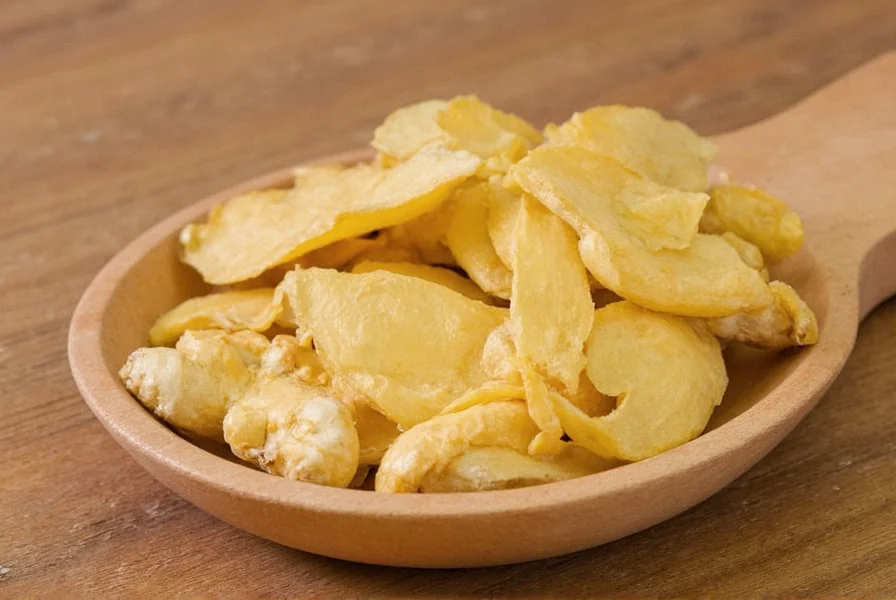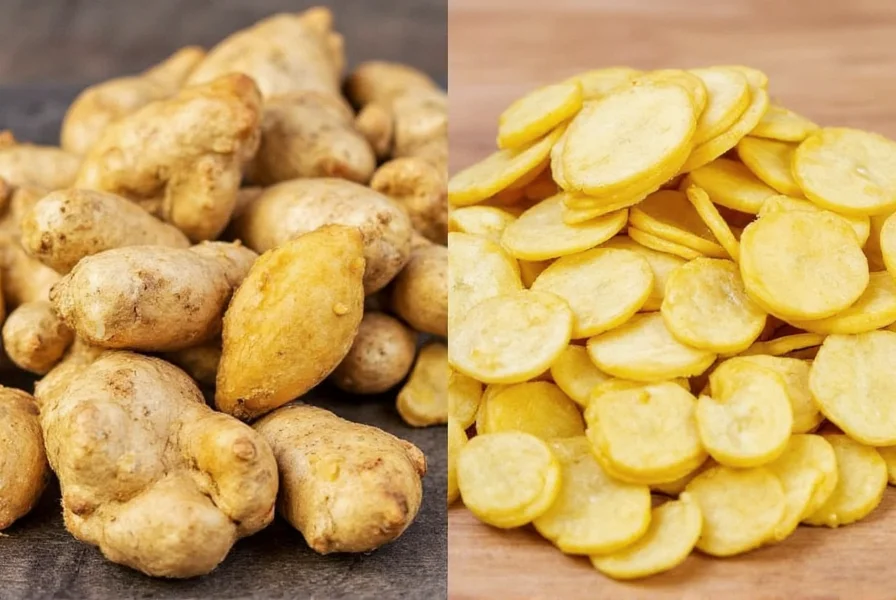When comparing dried ginger versus fresh ginger, understanding their fundamental differences helps optimize your cooking and wellness routines. Both forms originate from the same Zingiber officinale rhizome but undergo different processing that significantly alters their chemical composition, flavor profiles, and applications.
Nutritional Composition Compared
The dehydration process concentrates certain compounds in dried ginger while diminishing others. Fresh ginger contains approximately 80% water content, which affects its nutrient density per volume compared to its dried counterpart.
| Nutrient (per 10g) | Fresh Ginger | Dried Ginger |
|---|---|---|
| Calories | 8 kcal | 39 kcal |
| Gingerols | 1.2 mg | 3.8 mg |
| Zingerone | 0.9 mg | 0.3 mg |
| Vitamin C | 0.7 mg | 0.2 mg |
| Fiber | 0.2 g | 1.1 g |
This nutritional comparison reveals why dried ginger vs fresh ginger matters for specific health applications. The concentration process increases certain bioactive compounds while reducing others, creating distinct therapeutic profiles.

Flavor Profiles and Culinary Applications
Fresh ginger delivers a bright, sharp, and slightly citrusy flavor with pronounced heat. Its high moisture content makes it ideal for grating into sauces, marinades, and beverages where you want immediate aromatic impact. Chefs often prefer fresh ginger for Asian cuisine, stir-fries, and fresh preparations where its volatile oils can shine.
Dried ginger (typically used as ground ginger) offers a warmer, earthier, and more concentrated flavor profile. The drying process converts some gingerols to shogaols, creating a different spice dynamic that works better in baked goods, spice blends, and long-cooking dishes. When considering dried ginger vs fresh ginger for cooking, remember that 1/4 teaspoon of ground ginger generally substitutes for 1 tablespoon of fresh grated ginger.
Medicinal Properties and Health Benefits
Research shows both forms provide anti-inflammatory and antioxidant benefits, but their effectiveness varies by application. Fresh ginger contains higher levels of zingerone, which may be more effective for immediate nausea relief. The concentrated gingerols in dried ginger demonstrate stronger anti-inflammatory effects in some studies, making it potentially more beneficial for chronic inflammation management.
For digestive issues, fresh ginger's volatile oils work faster, while dried ginger's concentrated compounds may provide longer-lasting effects. Understanding these differences between dried ginger vs fresh ginger for health applications helps target your usage more effectively.
Practical Considerations for Home Use
Storage requirements differ significantly between the two forms. Fresh ginger root lasts 2-3 weeks refrigerated in a paper bag, while properly stored dried ginger powder maintains potency for 2-3 years. This shelf life difference represents one of the most practical distinctions when choosing between dried ginger vs fresh ginger.
Cost analysis shows dried ginger typically costs less per serving despite the higher upfront price per ounce, due to its concentrated nature and longer usability. When substituting dried ginger for fresh in recipes, remember the flavor profile changes—dried ginger won't provide the same bright, citrusy notes as fresh.

When to Choose Each Form
Select fresh ginger when you want:
- Immediate, bright flavor in raw preparations
- Higher moisture content for beverages and sauces
- Maximum zingerone content for quick nausea relief
- Visual appeal with visible ginger pieces in dishes
Choose dried ginger when you need:
- Longer shelf stability without refrigeration
- More concentrated gingerols for therapeutic applications
- Consistent flavor in baked goods and spice blends
- Ease of measurement in precise quantities
Understanding these distinctions between dried ginger vs fresh ginger helps optimize both culinary results and potential health benefits. Neither form is universally superior—the right choice depends on your specific application, desired flavor profile, and intended health outcomes.











 浙公网安备
33010002000092号
浙公网安备
33010002000092号 浙B2-20120091-4
浙B2-20120091-4